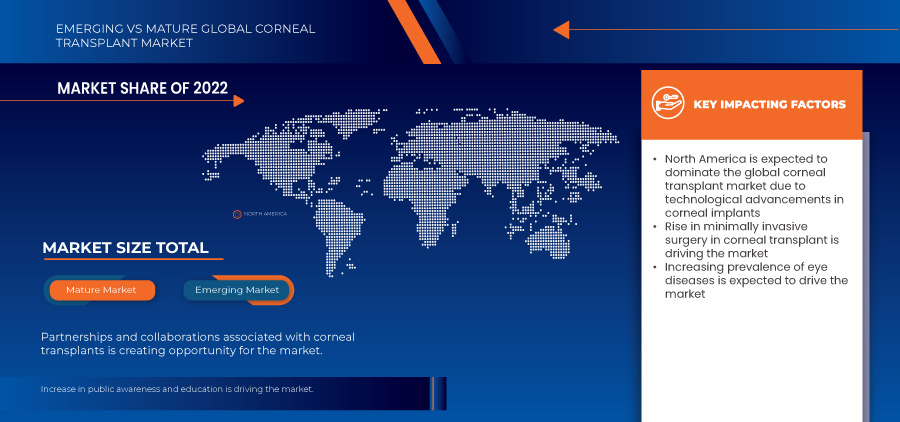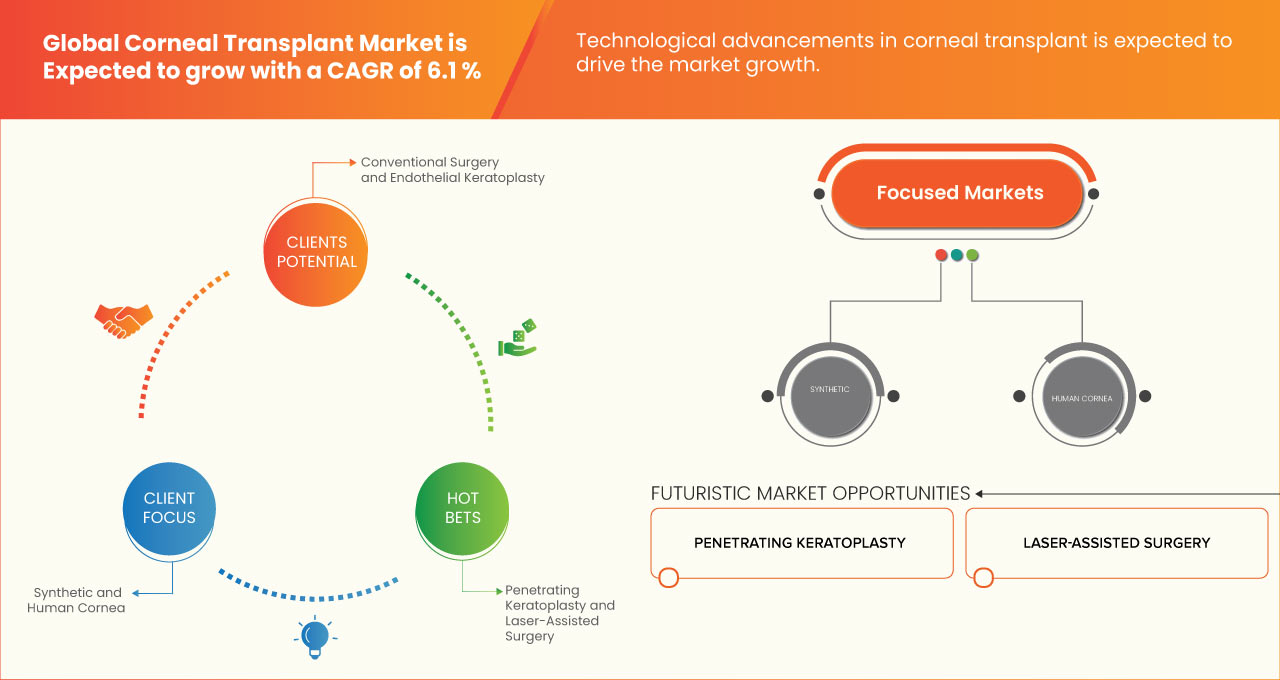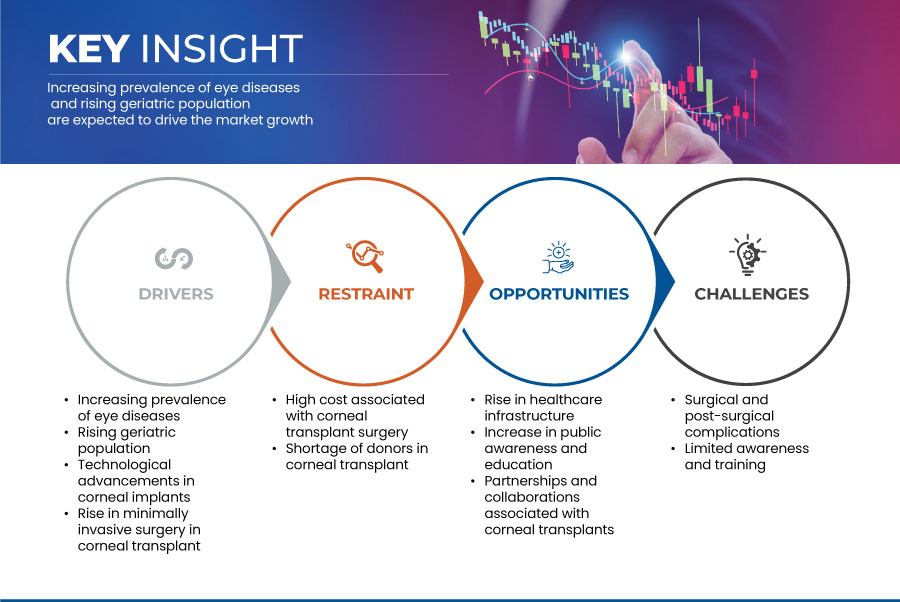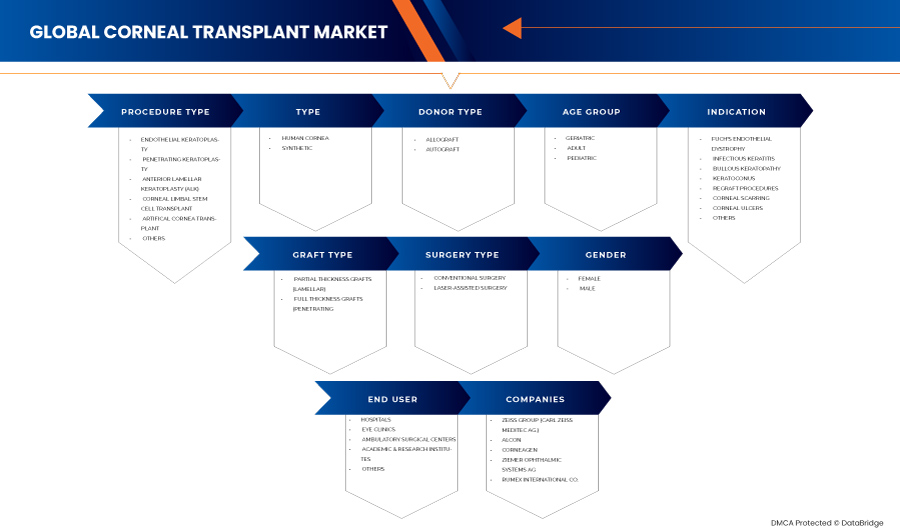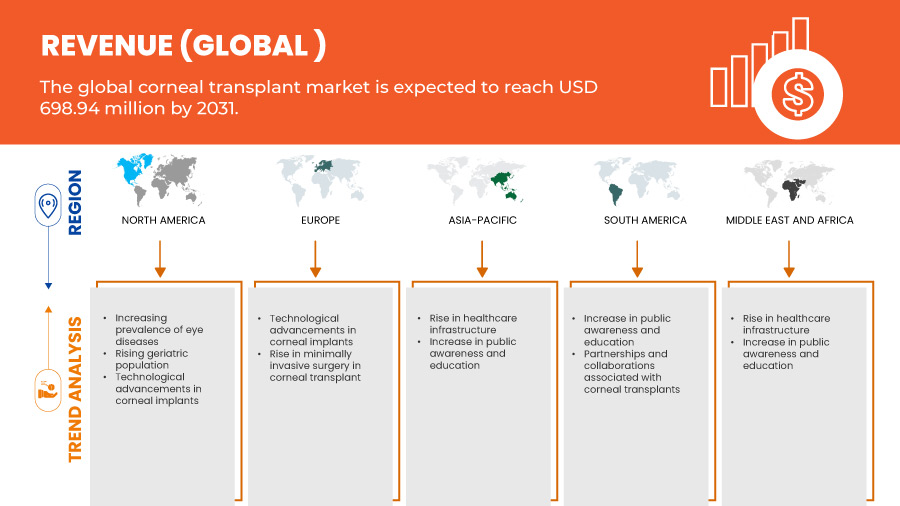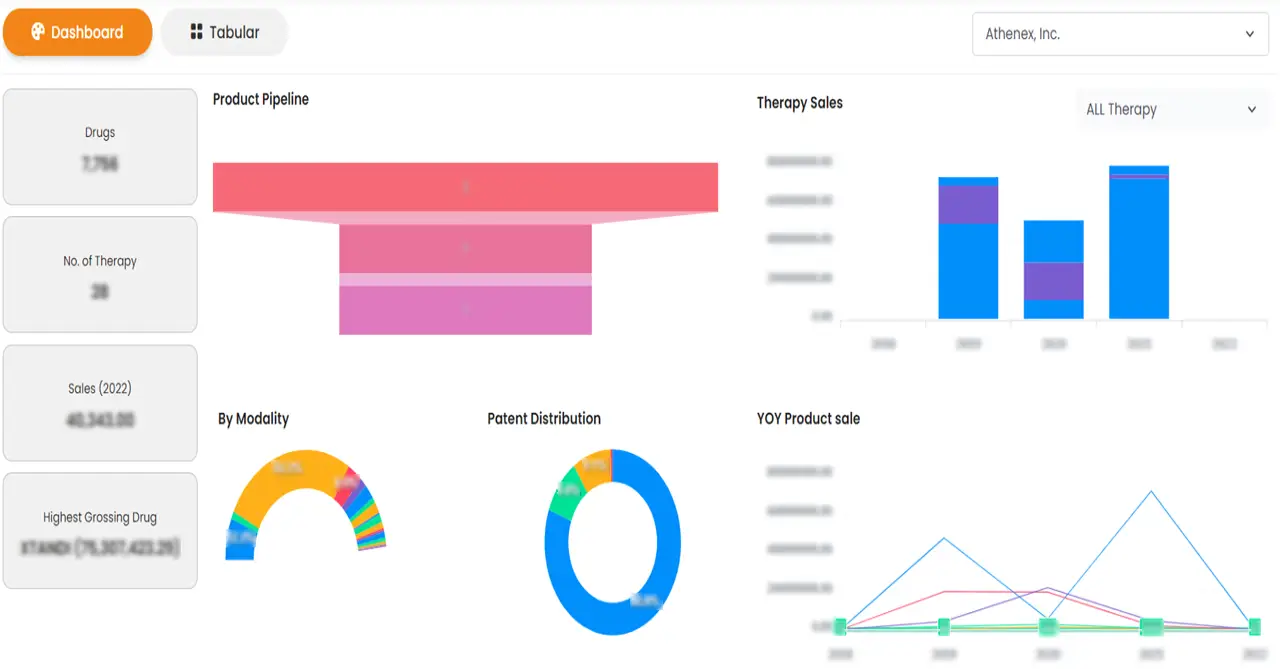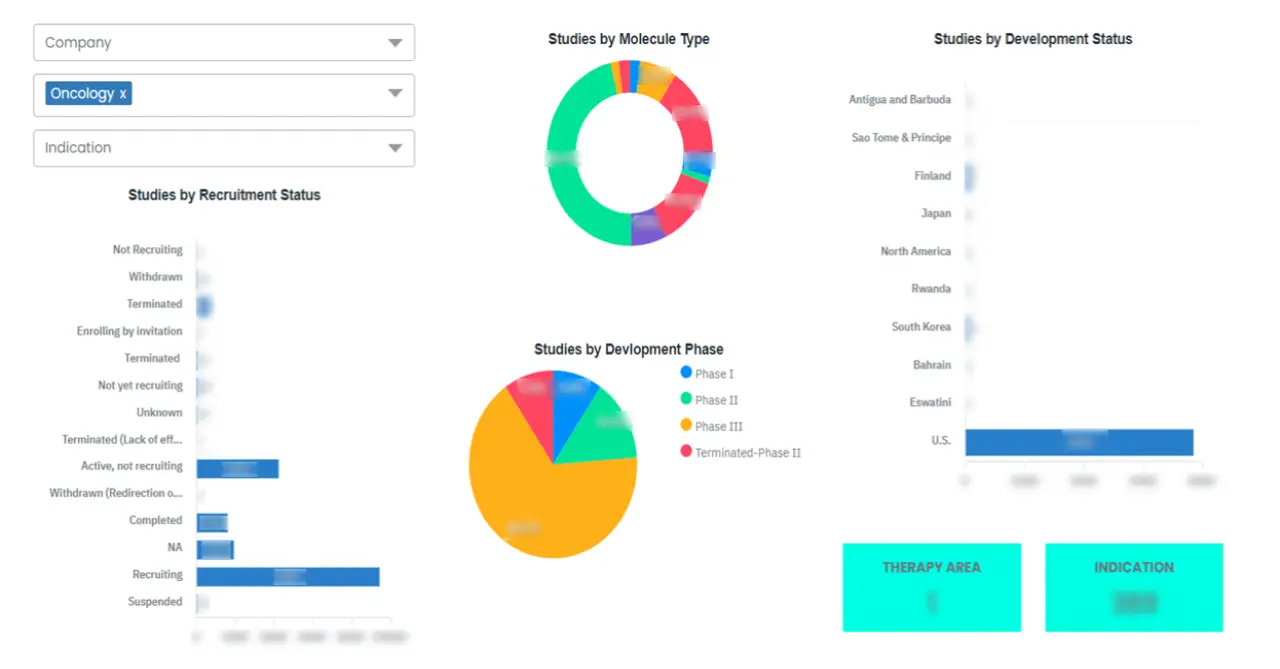Global Corneal Transplant Market
Tamanho do mercado em biliões de dólares
CAGR :
% 
 USD
461.78 Million
USD
741.57 Million
2024
2032
USD
461.78 Million
USD
741.57 Million
2024
2032
| 2025 –2032 | |
| USD 461.78 Million | |
| USD 741.57 Million | |
|
|
|
|
Global Corneal Transplant Market, By Procedure Type (Endothelial Keratoplasty, Penetrating Keratoplasty, Anterior Lamellar Keratoplasty (ALK), Corneal Limbal Stem Cell Transplant, Artificial Cornea Transplant, and Others), Type (Human Cornea and Synthetic), Donor Type (Autograft and Allograft), Graft Type (Partial Thickness Grafts (Lamellar) and Full Thickness Grafts (Penetrating)), Surgery Type (Conventional Surgery, Laser-Assisted Surgery), Indication (Fuch's Endothelial Dystrophy, Infectious Keratitis, Bullous Keratopathy, Keratoconus, Regraft Procedures, Corneal Scarring, Corneal Ulcers, and Others), Gender (Female and Male), Age Group (Geriatric, Adult, and Pediatric), End User (Hospitals, Eye Clinics, Ambulatory Surgical Centers, Academic & Research Institutes, and Others) - Industry Trends and Forecast to 2031
Corneal Transplant Market Analysis and Size
The global corneal implants market is driven by several factors, including the increasing prevalence of corneal diseases, a growing aging population, advances in technology, increasing demand for minimally invasive procedures, rising awareness of corneal transplantation, government initiatives and funding, increasing adoption of hybrid and toric lenses, growing popularity of cross-linking procedures, expanding indications for corneal implants, and a competitive landscape that fosters innovation. These factors are collectively driving the demand for corneal implants, particularly in developed countries, as patients seek effective treatments for vision disorders and conditions such as keratoconus, Fuchs' dystrophy, and pseudophakic bullous keratopathy.
Data Bridge Market Research analyzes that the global corneal transplant market is expected to reach USD 698.94 million by 2031 from USD 436.38 million in 2023, growing with a CAGR of 6.1% in the forecast period of 2024 to 2031.
|
Report Metric |
Details |
|
Forecast Period |
2024 to 2031 |
|
Base Year |
2023 |
|
Historic Years |
2022 (Customizable 2016-2021) |
|
Quantitative Units |
Revenue in USD Million |
|
Segments Covered |
Procedure Type (Endothelial Keratoplasty, Penetrating Keratoplasty, Anterior Lamellar Keratoplasty (ALK), Corneal Limbal Stem Cell Transplant, Artificial Cornea Transplant, and Others), Type (Human Cornea and Synthetic), Donor Type (Autograft and Allograft), Graft Type (Partial Thickness Grafts (Lamellar) and Full Thickness Grafts (Penetrating)), Surgery Type (Conventional Surgery, Laser-Assisted Surgery), Indication (Fuch's Endothelial Dystrophy, Infectious Keratitis, Bullous Keratopathy, Keratoconus, Regraft Procedures, Corneal Scarring, Corneal Ulcers, and Others), Gender (Female and Male), Age Group (Geriatric, Adult, and Pediatric), End User (Hospitals, Eye Clinics, Ambulatory Surgical Centers, Academic & Research Institutes, and Others) |
|
Countries Covered |
U.S., Canada, Mexico, Germany, France, U.K., Italy, Spain, Russia, Netherlands, Switzerland, Turkey, Belgium, Denmark, Norway, Sweden, Poland, Rest of Europe, Brazil, Argentina, Rest of South America, China, India, Japan, Australia, South Korea, Singapore, Philippines, Malaysia, Indonesia, Thailand and Rest of Asia-Pacific, South Africa, Saudi Arabia, U.A.E., Egypt, Israel, Rest of Middle East and Africa |
|
Market Players Covered |
ZEISS Group (Carl Zeiss Meditec AG.), Alcon, CorneaGen, Ziemer Ophthalmic Systems AG, RUMEX International Co., among others. |
Market Definition
The corneal transplant market refers to the medical field focused on surgical procedures that replace damaged or diseased corneas with healthy donor tissue. Corneal transplants, also known as keratoplasty, are performed to restore vision in patients suffering from conditions such as keratoconus, corneal scarring, infections, or corneal endothelial dysfunction. The market encompasses various types of transplant procedures, including penetrating keratoplasty (full-thickness corneal transplant) and endothelial keratoplasty (partial-thickness transplant), and is supported by advancements in surgical techniques, availability of donor tissues, and improved postoperative care. As eye disorders become more prevalent globally, and with technological innovations enhancing the success rate of surgeries, the corneal transplant market continues to grow, addressing the rising demand for vision restoration.
Global Corneal Transplant Market Dynamics:
This section deals with understanding the market drivers, advantages, opportunities, restraints, and challenges. All of this is discussed in detail as below:
Drivers
- Increasing Prevalence of Eye Diseases
The increasing prevalence of eye diseases is a significant driver in the global corneal transplant market, as conditions like keratoconus, Fuchs' endothelial dystrophy, and corneal scarring due to infections or trauma are becoming more common. These diseases can lead to severe vision impairment or blindness, prompting a growing demand for corneal transplants as a restorative treatment. The rise in eye disorders is often linked to factors such as aging populations, higher rates of diabetes, and increased exposure to environmental pollutants and UV radiation, which can damage the cornea. Also, advancements in diagnostic techniques are leading to earlier detection of these diseases, allowing for timely interventions, including corneal transplantation. Furthermore, greater awareness of corneal health and the availability of improved surgical techniques, such as Descemet's Membrane Endothelial Keratoplasty (DMEK) and Descemet's Stripping Automated Endothelial Keratoplasty (DSAEK), are contributing to the growing acceptance of corneal transplants. As the burden of eye diseases continues to grow worldwide, the need for effective solutions like corneal transplants is expected to rise, fueling market growth.
For instance,
- In June 2023, according to the article published in NCBI, a study was conducted to investigate the prevalence of keratoconus in a large German cohort and to evaluate possible associated factors. Keratoconus appears to be a rare corneal disease with a prevalence previously estimated at 1:2000. However, in recent relatively small studies, a higher prevalence was found. Prevalence is reported from 1: 6000 for US citizens, 1:1000 for Israeli adolescents, up to 1:20 for Saudi-Arabian Children. Newer studies detected prevalence estimates of 1:191 in New Zealand high school students. A prevalence of up to 1:84 was detected for young Australian adults. The prevalence of keratoconus treatment in the German population is approximately tenfold higher than previously reported in the literature using the latest technologies, namely Scheimpflug imaging, which act as a driver in the growth of the market.
Rising Geriatric Population
The rising geriatric population is a key driver in the global corneal transplant market, as older adults are more susceptible to various eye conditions that can lead to corneal damage and the need for transplants. Age-related eye diseases, such as Fuchs' endothelial dystrophy, bullous keratopathy, and other degenerative corneal disorders, become more prevalent with advancing age, significantly increasing the demand for corneal transplants. Also, older adults are more likely to experience complications from cataract surgery or develop chronic conditions like diabetes, which can further contribute to corneal deterioration. As the global population ages, the number of individuals requiring corneal transplants is expected to rise, particularly in regions with rapidly aging demographics. This trend is further fueled by increased awareness about the availability and success rates of corneal transplants, as well as advancements in surgical techniques that offer better outcomes and faster recovery times for older patients. As a result, the growing geriatric population is a major factor driving the expansion of the global corneal transplant market, highlighting the need for accessible and effective treatment options for age-related corneal diseases.
Opportunity
- Rise in Healthcare Infrastructure
The rise in healthcare infrastructure offers significant opportunities for the global corneal transplant market by expanding access to transplant services. Enhanced infrastructure leads to the establishment of more hospitals and specialized clinics, making corneal transplants more accessible to a broader population. Improved facilities in underserved or rural areas ensure that patients who previously had limited access to specialized eye care can now receive essential transplant services.
Modernized healthcare facilities are equipped with advanced surgical technologies and diagnostic tools, which directly improve the success rates of corneal transplants and minimize complications. Specialized centers within these advanced systems provide focused expertise and resources, further enhancing surgical outcomes and patient care. The increased capacity of these facilities also supports a higher volume of transplant procedures, effectively addressing patient demand and reducing waiting times.
For instance,
- In April 2024, according to the article ‘The Rise of Hospital Infrastructure & Modernization Updates,’ the U.S. boasts of a robust healthcare infrastructure consisting of over 6,000 hospitals and thousands of small clinics, offering more than a million hospital beds to patients. This infrastructure encompasses a variety of essential elements, such as advanced research labs, cutting-edge technology, and a wide range of medical equipment. Moreover, the federal government has been providing funds for the continuous modernization of the country’s healthcare infrastructure
- In August 2023, according to JLL India, India has been welcoming more investments and innovation to deal with future life-threatening diseases and pandemics that, in turn, help in growing the country’s healthcare and life sciences sector
Restraint/Challenge
- The High Cost of Corneal Transplant Surgery
The high cost of corneal transplant surgery acts as a significant restraint on the growth of the global corneal transplant market by limiting patient access and affordability, particularly in low- and middle-income countries. Corneal transplant procedures, including traditional Penetrating Keratoplasty (PK) and advanced techniques like Descemet’s Membrane Endothelial Keratoplasty (DMEK) or Descemet’s Stripping Automated Endothelial Keratoplasty (DSAEK), often involve substantial expenses not only for the surgical procedure itself but also for the associated costs of preoperative assessments, postoperative care, medications, and follow-up visits. Also, the cost of obtaining donor corneas, whether through eye banks or commercial sources, further contributes to the financial burden. In many regions, particularly those with limited healthcare infrastructure, these costs are exacerbated by a lack of insurance coverage or inadequate reimbursement policies, making corneal transplants financially inaccessible to a large portion of the population. Furthermore, the need for specialized surgical expertise and advanced equipment increases the overall expense, thereby restricting the availability of these procedures to well-equipped medical centers in urban areas. Consequently, the high costs associated with corneal transplant surgery hinder market growth by reducing the potential patient pool, especially in underserved regions where the burden of corneal diseases is often most significant and access to affordable healthcare is limited.
For instance,
- According to the data published by Indiaorgantransplant.com, The average cost of eye transplant surgery in India is around Rs.2, 10,000 (USD 2,600) to Rs.2, 60,000 (USD 3,200). The cost depends on several factors, such as the type of procedure, surgeon's fees, hospital charges, and other associated costs. Also, the average cost of a transplant in India is much higher than any other treatment, which becomes a major factor in opting against transplant surgery and acts as a restraint in the growth of the market
Recent Developments
- In January 2024, Carl Zeiss India's Medical Technology Division showcased Cataract and Refractive Workflow at Phaco Festival by Nethradhama Super Speciality, Bengaluru. At the Phaco Festival, the spotlight shined on ZEISS's transformative impact on the Cataract and Corneal Refractive Workflows
- In June 2024, CorneaGen today announces the commercial launch of Corneal Tissue Addition for Keratoplasty (CTAK), an innovative and extremely effective solution to corneal contouring for keratoconic eyes. Developed by CorneaGen in partnership with CTAK LLC and Ziemer, CTAK provides patient ready, gamma-irradiated sterile, non-immunogenic corneal tissue segments, laser cut and customized to patients’ specific cone severity and location
- In January 2024, Seattle-based CorneaGen is excited to announce an expansion of their eye recovery services throughout northern and southern California. Through this expansion of service, CorneaGen will now provide both eye recovery and processing services of donor tissue for facilities throughout the state, resulting in an even better experience for the patients, families, and staff of their California partner facilities
- In August 2024, ZEISS extends its global refractive industry momentum with more than 10 million eyes treated with ZEISS SMILE and ZEISS SMILE pro; ZEISS announces first treatment in the CE market for hyperopia with lenticule extraction using ZEISS SMILE pro technology
Global Corneal Transplant Market Scope
The global corneal transplant market is segmented into eight notable segments based on procedure type, type, donor type, graft type, surgery type, indication, gender, age group, and end user. The growth among segments helps you analyze niche pockets of growth and strategies to approach the market and determine your core application areas and the differences in your target markets.
Procedure Type
- Endothelial Keratoplasty
- Penetrating Keratoplasty
- Anterior Lamellar Keratoplasty (ALK)
- Corneal Limbal Stem Cell Transplant
- Artificial Cornea Transplant
- Others
On the basis of procedure type, the market is segmented into endothelial keratoplasty, penetrating keratoplasty, Anterior Lamellar Keratoplasty (ALK), corneal limbal stem cell transplant, artificial cornea transplant and others.
Type
- Human Cornea
- Synthetic
On the basis of type, the market is segmented into human cornea and synthetic.
Donor Type
- Allograft
- Autograft
On the basis of donor type, the market is segmented into allograft and autograft.
Graft Type
- Partial Thickness Grafts (Lamellar)
- Full Thickness Grafts (Penetrating)
On the basis of graft type, the market is segmented into partial thickness grafts (lamellar), full thickness grafts (penetrating).
Surgery Type
- Conventional Surgery
- Laser-Assisted Surgery
On the basis of surgery type, the market is segmented into conventional surgery and laser-assisted surgery.
Indication
- Fuch's Endothelial Dystrophy
- Infectious Keratitis
- Bullous Keratopathy
- Keratoconus
- Regraft Procedures
- Corneal Scarring
- Corneal Ulcers
- Others
On the basis of indication, the market is segmented into fuch's endothelial dystrophy, infectious keratitis, bullous keratopathy, keratoconus, regraft procedures, corneal scarring, corneal ulcers and others.
Gender
- Female
- Male
On the basis of gender, the market is segmented into female and male.
Age Group
- Geriatric
- Adult
- Pediatric
On the basis of age group, the market is segmented into geriatric, adult and pediatric.
End User
- Hospitals,
- Eye Clinics,
- Ambulatory Surgical Centers,
- Academic & Research Institutes
- Others
On the basis of end user, the market is segmented into hospitals, eye clinics, ambulatory surgical centers, academic & research institutes and others.
Global Corneal Transplant Market Regional Analysis/Insights
Global corneal transplant market is analyzed, and market size insights and trends are provided based on procedure type, type, donor type, graft type, surgery type, indication, gender, age group, and end user as referenced above.
The countries covered in this market report are U.S., Canada, Mexico, Germany, France, U.K., Italy, Spain, Russia, Netherlands, Switzerland, Turkey, Belgium, Denmark, Norway, Sweden, Poland, Rest of Europe, Brazil, Argentina, Rest of South America, China, India, Japan, Australia, South Korea, Singapore, Philippines, Malaysia, Indonesia, Thailand and Rest of Asia-Pacific, South Africa, Saudi Arabia, U.A.E., Egypt, Israel, Rest of Middle East and Africa.
North America is expected to dominate the market due to factors like high prevalence of infections, advanced healthcare infrastructure, strong consumer awareness and purchasing power, ongoing research and development initiatives, established marketing and distribution networks. The U.S. is expected to dominate in the North America market due to factors such as large population, high healthcare expenditure, sophisticated healthcare system, extensive pharmaceutical industry, and widespread consumer awareness. Germany is expected to dominate in the Europe market due to its advanced healthcare infrastructure, significant consumer demand for eye treatments, strong pharmaceutical industry, extensive research and development efforts, and well-established distribution networks. China is expected to dominate in the Asia-Pacific market due to its large population, increasing healthcare spending, expanding pharmaceutical industry, growing consumer awareness, and demand for treatments, coupled with a developing healthcare infrastructure and a rising prevalence.
The country section of the report also provides individual market impacting factors and changes in market regulation that impact the current and future trends of the market. Data points such as down-stream and upstream value chain analysis, technical trends and porter's five forces analysis, case studies are some of the pointers used to forecast the market scenario for individual countries. Also, the presence and availability of global brands and their challenges faced due to large or scarce competition from local and domestic brands, impact of domestic tariffs and trade routes are considered while providing forecast analysis of the country data.
Competitive Landscape and Global Corneal Transplant Market Share Analysis
The global corneal transplant market is segmented into eight notable segments based on procedure type, type, donor type, graft type, surgery type, indication, gender, age group, and end user.
The global corneal transplant market competitive landscape provides details by competitor. Details included are company overview, company financials, revenue generated, market potential, investment in research and development, new market initiatives, global presence, production sites and facilities, production capacities, company strengths and weaknesses, product launch, product width and breadth, and application dominance. The above data points provided are only related to the companies' focus on the global corneal transplant market.
Some of the major players operating in the global corneal transplant market are ZEISS Group (Carl Zeiss Meditec AG.), Alcon, CorneaGen, Ziemer Ophthalmic Systems AG, RUMEX International Co., among others.
SKU-
Obtenha acesso online ao relatório sobre a primeira nuvem de inteligência de mercado do mundo
- Painel interativo de análise de dados
- Painel de análise da empresa para oportunidades de elevado potencial de crescimento
- Acesso de analista de pesquisa para personalização e customização. consultas
- Análise da concorrência com painel interativo
- Últimas notícias, atualizações e atualizações Análise de tendências
- Aproveite o poder da análise de benchmark para um rastreio abrangente da concorrência
Metodologia de Investigação
A recolha de dados e a análise do ano base são feitas através de módulos de recolha de dados com amostras grandes. A etapa inclui a obtenção de informações de mercado ou dados relacionados através de diversas fontes e estratégias. Inclui examinar e planear antecipadamente todos os dados adquiridos no passado. Da mesma forma, envolve o exame de inconsistências de informação observadas em diferentes fontes de informação. Os dados de mercado são analisados e estimados utilizando modelos estatísticos e coerentes de mercado. Além disso, a análise da quota de mercado e a análise das principais tendências são os principais fatores de sucesso no relatório de mercado. Para saber mais, solicite uma chamada de analista ou abra a sua consulta.
A principal metodologia de investigação utilizada pela equipa de investigação do DBMR é a triangulação de dados que envolve a mineração de dados, a análise do impacto das variáveis de dados no mercado e a validação primária (especialista do setor). Os modelos de dados incluem grelha de posicionamento de fornecedores, análise da linha de tempo do mercado, visão geral e guia de mercado, grelha de posicionamento da empresa, análise de patentes, análise de preços, análise da quota de mercado da empresa, normas de medição, análise global versus regional e de participação dos fornecedores. Para saber mais sobre a metodologia de investigação, faça uma consulta para falar com os nossos especialistas do setor.
Personalização disponível
A Data Bridge Market Research é líder em investigação formativa avançada. Orgulhamo-nos de servir os nossos clientes novos e existentes com dados e análises que correspondem e atendem aos seus objetivos. O relatório pode ser personalizado para incluir análise de tendências de preços de marcas-alvo, compreensão do mercado para países adicionais (solicite a lista de países), dados de resultados de ensaios clínicos, revisão de literatura, mercado remodelado e análise de base de produtos . A análise de mercado dos concorrentes-alvo pode ser analisada desde análises baseadas em tecnologia até estratégias de carteira de mercado. Podemos adicionar quantos concorrentes necessitar de dados no formato e estilo de dados que procura. A nossa equipa de analistas também pode fornecer dados em tabelas dinâmicas de ficheiros Excel em bruto (livro de factos) ou pode ajudá-lo a criar apresentações a partir dos conjuntos de dados disponíveis no relatório.


